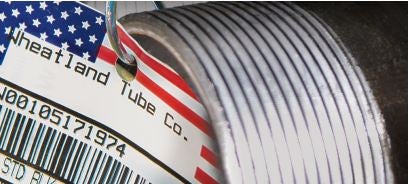Save Money on Cutting Tools and Reduce Labor Costs with Continuous Weld Pipe
 Have you ever noticed how quickly you go through a set of dies when you’re threading pipe? Do you find that today’s pipe is harder to bend in the field? If so, you’re probably using imported electric resistance weld (ERW) pipe — and you’ve probably already noticed that this type of pipe can wreak havoc on your tools and increase labor. Continuous weld (CW) pipe may be your answer.
Have you ever noticed how quickly you go through a set of dies when you’re threading pipe? Do you find that today’s pipe is harder to bend in the field? If so, you’re probably using imported electric resistance weld (ERW) pipe — and you’ve probably already noticed that this type of pipe can wreak havoc on your tools and increase labor. Continuous weld (CW) pipe may be your answer.
While ERW pipe does meet industry standards, it’s a known fact that CW pipe has a more uniform grain structure, making it easier to bend, cut and thread — while still meeting all industry standards.
Easier on tools
The uniform grain pattern and smooth surface mean that CW pipe will cause less wear and tear on tools and dies than ERW pipe. In a recent contractor survey, 72 percent of respondents indicated they believe CW pipe is easier on tools. A new engineering study confirms it: Threading tools use 22 percent less wattage while threading CW pipe (compared to ERW pipe).
All in the manufacturing
CW pipe is hot-formed, which means the entire piece of steel is heated during tube formation, not just the edges. Manufacturers heat and then slowly cool the steel in order to toughen it and reduce its brittleness — a process known as annealing. As the coiled steel reaches 2,450° F, rollers bend the steel into a cylindrical shape and the pressure and heat fuse the edges together. There are no flash forms (bumps) produced in this process, hence the term continuous weld (CW).
Cross-section: Steel grain structure in CW pipe
Easier to fabricate than ERW pipe
Download our latest technical briefing, CW: Made for Machinability, tolearn the advantages of using CW pipe, as well as the differences between cold-formed and hot-formed manufacturing.
